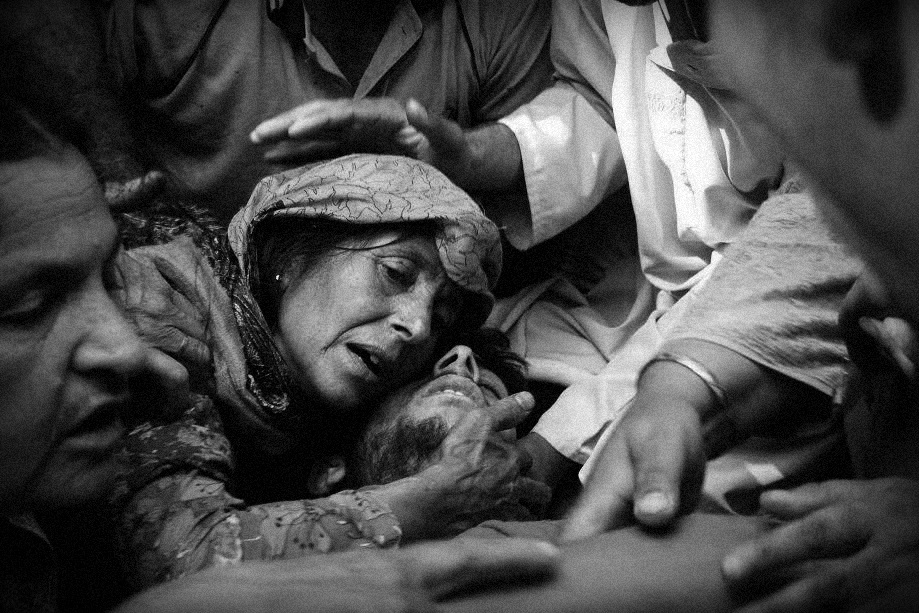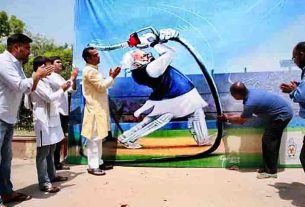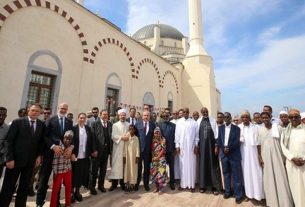Tue 06 August 2019:
India on Monday scrapped the special provision granted to disputed region of Jammu and Kashmir.
Since 1947, the Muslim-majority region enjoyed special provisions to enact its own laws. The special provision also protected its citizenship law that disallowed outsiders to settle and own land in the territory.
Prime Minister Narendra Modi during his election campaign earlier this year promised to remove special provision to India’s only Muslim-majority state.
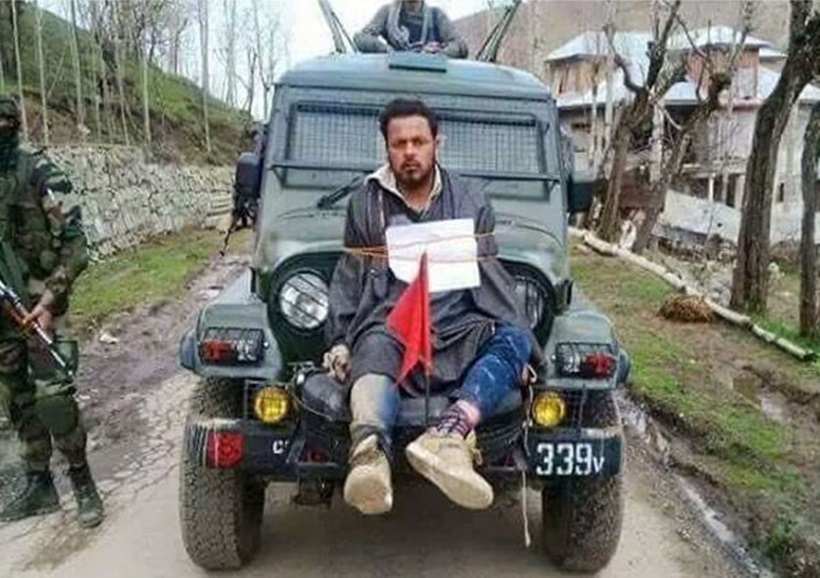
Farooq Ahmad is seen tied to the front of an army vehicle was use as ‘Human sheild’ against the protester in Beerwah area of Central Kashmir’s Budgam District. (File Photo-Courtesy: Facebook)
What does this development entail for future of the insurgency-hit state over which India and Pakistan, two nuclear-power neighbors, have fought two wars?
1. Until 1947, India was divided into two sovereignties. The territories directly controlled by the British and 562 princely states under British suzerainty.
2. At the time of Partition, Muslim-majority regions under British-control went to become Pakistan. The rulers of princely states were given a choice; to either accede with India or Pakistan, keeping in view aspirations of their subjects.
3. Rulers of three princely states; Jammu and Kashmir, Junagarh and Hyderabad could not make up their mind and wanted to remain independent.
4. Jammu and Kashmir was a Muslim-majority province ruled by a Hindu king Hari Singh; Junagadh and Hyderabad were Hindu-majority regions ruled by Muslim rulers. Both of them were annexed by India using the pretext that they were Hindu majority.
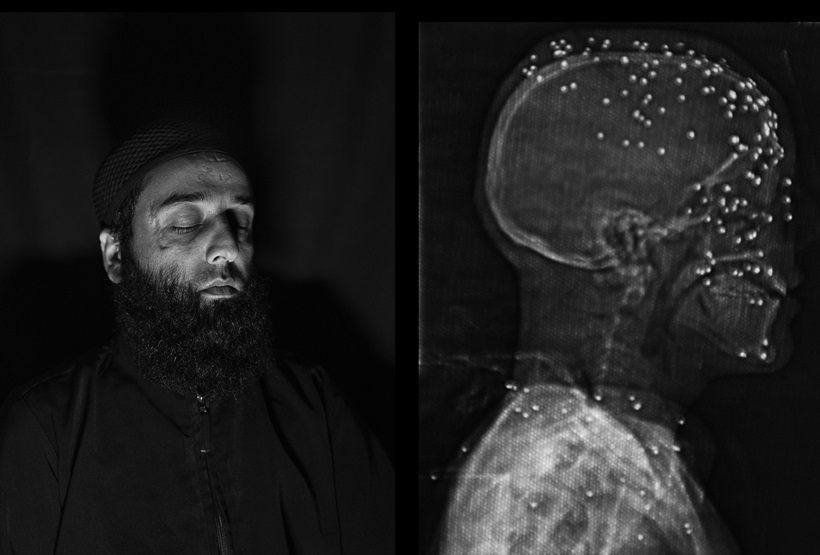
5. A rebellion in Kashmir’s Poonch region and “invasion” of tribals from Pakistan’s northwestern city of Peshawar and adjoining areas led Singh to seek help from India.
6. Singh with the consent of local Kashmiri politician Sheikh Mohammad Abdullah signed an instrument of accession with India which entailed that India will send troops to restore law and order and then the issue of accession will be referred to people.
7. India went to the UN Security Council complaining that Pakistan was backing “invaders”. The UN asked the area to be cleared from “invaders” and suggested both countries hold a referendum. Both sides agreed to the proposal.
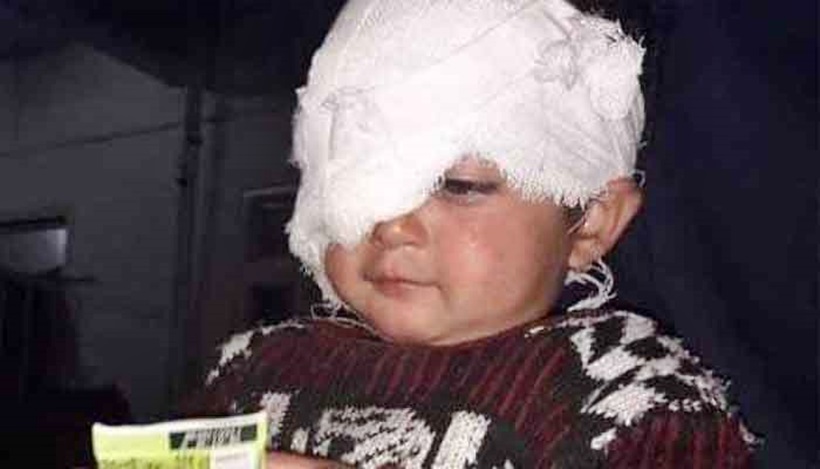
Hiba Jan, the 20-month-old who has become an emblem of India´s devastating and highly contentious use of pellet-firing shotguns in occupied Kashmir.
8. India set up Constituent Assembly in Jammu and Kashmir and appointed Sheikh Abdullah as prime minister.
9. It was decided that India will exercise only limited powers related to external affairs, communication and defense with reference to Jammu and Kashmir.
10. An article was incorporated in Indian Constitution under “Article 370” to protect the identity and demography of the Muslim-majority region that had acceded to India. It disallowed outsiders to buy properties and hold employments in state government. It was a temporary provision till the accession of the state is decided. But since it was never decided, the Article was deemed a permanent arrangement, to define New Delhi relations with Kashmir.
11. India’s Hindu nationalist Bharatiya Janata Party (BJP), since its inception, was against this provision.
12. The BJP-led government under Modi has removed Article 370, ending special status to the region, merging it completely in the Indian Union.
13. The order has also reorganized the region into centrally controlled Jammu and Kashmir and Ladakh as “Union Territories”.
14. Jammu and Kashmir region will have a local Assembly with limited powers, but there will be no Assembly in Ladakh region.
15. Until now, under Article 370 of the constitution, the state of Jammu and Kashmir enjoyed complete autonomy and the state legislature was free to draft its own laws except in the areas of communications, defense, finance, and foreign affairs.
– Demography of the region
According to latest census conducted in 2011 by the Indian government, the total population of Indian-administered Jammu and Kashmir was at 12.5 million, comprising 68.31% Muslims, 28.43% Hindus and 0.89% Buddhists.
Kashmir Valley has 94.4% Muslims while Jammu region comprises of 62.55% Hindus and 33.45% Muslims.
Unlike Kashmir Valley, Jammu region is not homogeneous. It has three sub-regions, with two of them forming Chenab Valley having 59.97% Muslim population and Pir Panchal with 74.52% Muslim population.
The remote mountainous Ladakh region, not a centrally administered territory — also known as cold desert — has a population of just 274,289, with 46.40% Muslims and 39.65% Buddhists.
Think your friends would be interested? Share this story!


